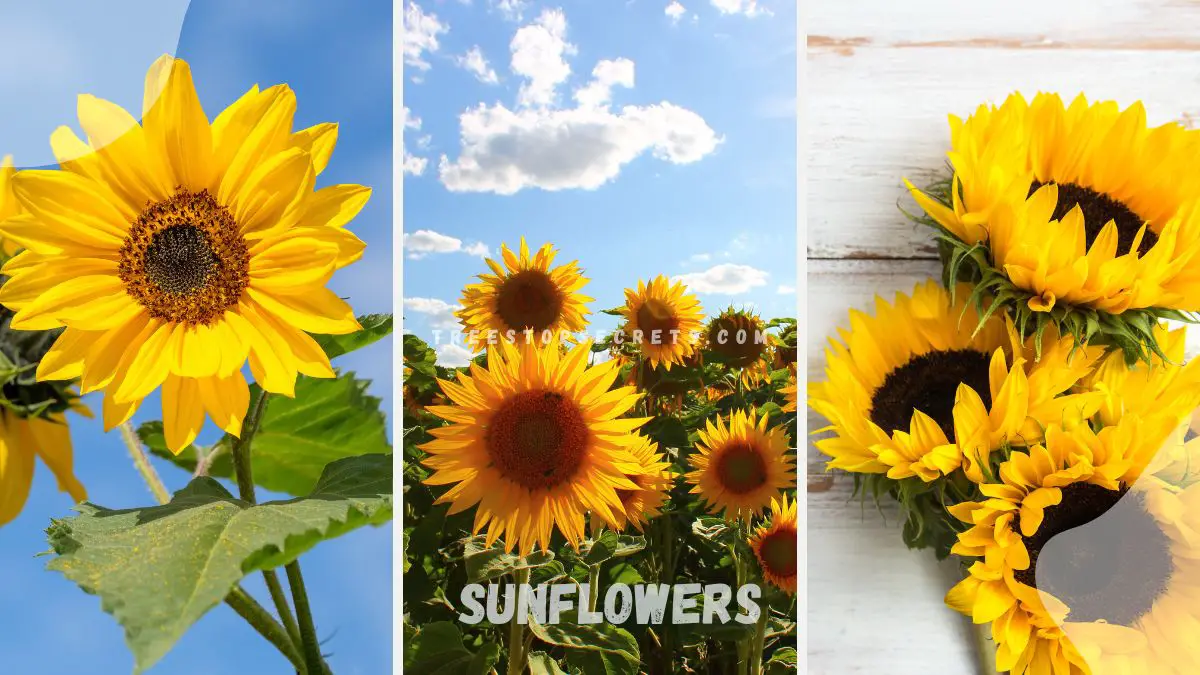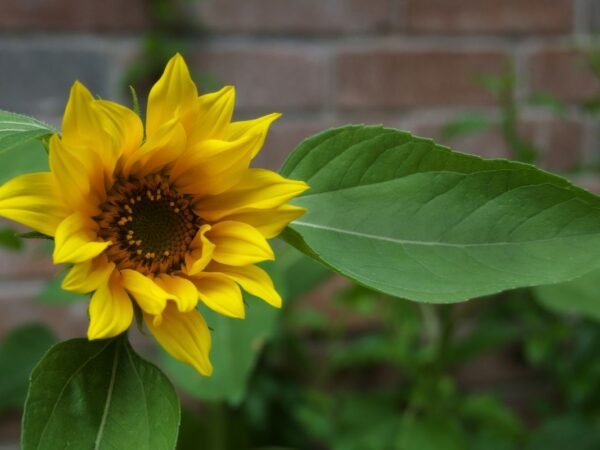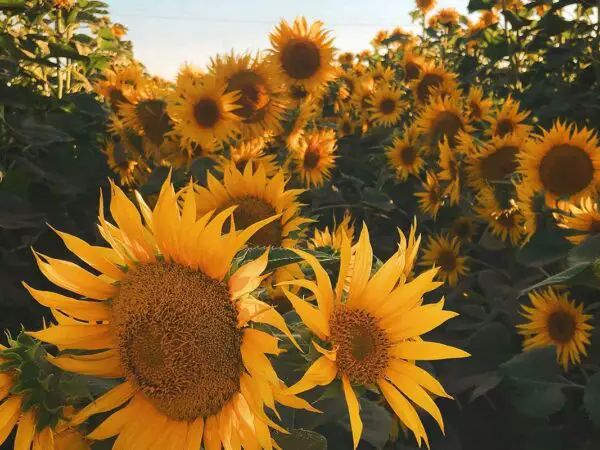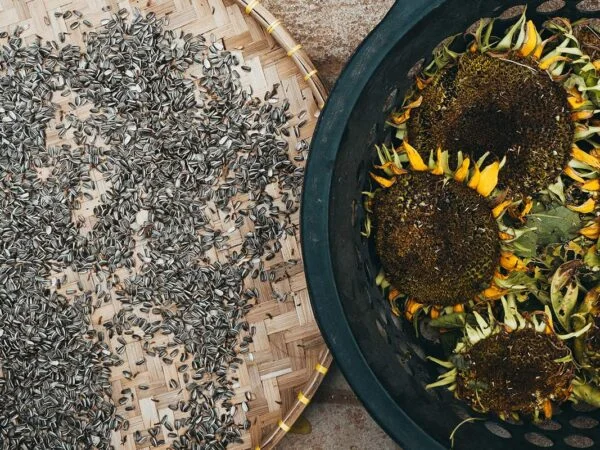Sunflowers are large, bright yellow flowers known for their impressive size and ability to turn toward the sun, a behavior called heliotropism. If you're curious about the sunflower's history, botanical characteristics, and cultural significance, you’re in the right place. This guide provides a thorough understanding of what sunflowers are and why they hold a special place in gardens, art, and agriculture. You’ll find everything you need to know about sunflowers, from their biological traits to their varied uses. Whether you're a gardener, artist, or simply an enthusiast, this information will deepen your appreciation of these radiant blooms.
Sunflowers (Helianthus annuus) are annual plants belonging to the family Asteraceae. They are characterized by their large, bright yellow petals and dark central disc, often containing many smaller flowers called florets. These plants can grow to impressive heights, often reaching between 1.5 to 3.5 meters. Sunflowers are native to North America and are widely cultivated for their seeds, which are used for food and oil production. The name "sunflower" comes from their sun-like appearance and their heliotropic behavior, where young flowers tilt to face the sun throughout the day.
Sunflowers are not just visually striking but also botanically fascinating and economically valuable. We offer extensive insights into their botanical classification, growing conditions, and uses in agriculture and art. For more detailed information on the life cycle, care, and diverse varieties of sunflowers, check out our additional resources, expert guides, and examples.
Key Takeaways
- Understanding Sunflowers: Sunflowers are vibrant, heliotropic plants that track the sun's movement throughout the day.
- Types and Characteristics: Different types of sunflowers vary in size, color, and petal arrangement, offering a diverse range of options for gardeners.
- Sunflower Symbolism: Sunflowers symbolize adoration, loyalty, and longevity across various cultures and traditions.
- Historical Insights: Sunflowers have a rich history, with origins in the Americas and significant cultivation by Native American tribes.
- Sunflower Varieties: From giant sunflowers to dwarf varieties, there is a sunflower type suitable for every garden size and preference.
- Colors and Their Significance: The color of sunflowers, ranging from traditional yellow to red and even bi-colored blooms, carries different meanings and symbolism.
Understanding Sunflowers
Definition and Significance
Sunflowers are tall herbs with large yellow-rayed flower heads, known for their vibrant appearance. These flowers hold significance in agriculture as they produce edible seeds that are rich in oil content. The extracted sunflower oil plays a crucial role in various industries due to its anti-inflammatory properties and ability to prevent skin irritation.
- Pros:
- Sunflowers are visually appealing and brighten up any garden or landscape.
- The oil extracted from sunflower seeds is a healthy alternative for cooking and skincare.
- Cons:
- Sunflowers require ample sunlight to thrive, making them unsuitable for shady areas.
- Overwatering can lead to root rot, affecting the growth and health of sunflowers.
Brief History
The term "sunflower" was first recorded in 1597, marking the beginning of its botanical recognition. Originating from the Americas, sunflowers are classified as New World composite plants, showcasing their historical significance. Interestingly, the concept of time travel is often associated with sunflowers, reflecting their ability to transport individuals back to ancient civilizations.
- The term "sunflower" was officially documented in botanical records in 1597.
- Sunflowers have been cultivated for centuries by various indigenous communities across the Americas.
- The unique appearance and growth patterns of sunflowers have fascinated botanists and historians alike.
Symbolism and Meaning
Sunflowers hold diverse symbolic meanings across different cultures, representing concepts like happiness, adoration, loyalty, and longevity. In various societies, these flowers are associated with positive emotions and traits, making them popular choices for gifts and decorations. The symbolism attached to sunflowers transcends mere aesthetics, embodying deeper sentiments cherished by many.
- In Greek mythology, sunflowers are linked to the story of Apollo and Clytie, symbolizing unwavering love and devotion.
- Native American tribes view sunflowers as symbols of harvest abundance and spiritual enlightenment.
Types and Characteristics
Overview of Types
Sunflowers come in various types, including branching and desert varieties. Branching sunflowers have multiple stems with smaller flowers, while desert sunflowers are adapted to arid conditions. These variations offer a diverse range of choices for gardeners. Some easy-to-grow options include Teddy Bear, Dwarf Sunspot, and Lemon Queen sunflowers.
Color Variations
Sunflowers exhibit a range of colors, with yellow and purple being the most common hues. The yellow color symbolizes cheerfulness and positivity, making it a popular choice for many. On the other hand, purple sunflowers add a unique touch to floral arrangements. Combining different colors creates visually stunning displays that attract both humans and pollinators.
- Yellow for cheerfulness
- Purple for uniqueness
Key Characteristics
One of the main features of sunflowers is their tall herbaceous nature, often reaching impressive heights. Their large yellow-rayed flower heads are iconic and easily recognizable. Beyond their ornamental value, sunflowers also offer edible seeds that are rich in nutrients. These seeds can be consumed raw or processed into oil for various culinary uses.
- Tall herbaceous nature
- Large yellow-rayed flower heads
- Edible seeds and oil production
Sunflower Symbolism
Traditional Symbolism
Native American cultures view sunflowers as symbols of harvest, bounty, and provision. Sunflowers were used in rituals to honor the sun and express gratitude for its life-giving energy. They also symbolize loyalty, representing unwavering faith and steadfastness in traditional ceremonies.
In Native American traditions, sunflowers hold spiritual significance, embodying the sun's power and vitality. These vibrant flowers are believed to bring good luck, happiness, and protection. They are often incorporated into spiritual practices to invoke positive energy and blessings.
Spiritual Meanings
Across various belief systems, sunflowers are revered as symbols of enlightenment and growth. In spiritual contexts, these flowers represent the journey towards self-discovery and inner transformation. Their upward-facing blooms symbolize reaching towards the divine and embracing one's true potential.
The majestic sunflower is associated with vitality, strength, and resilience in spiritual teachings. It signifies the ability to overcome challenges and bloom brightly even in adversity. The connection between sunflowers and spiritual growth underscores the importance of nurturing the soul and embracing personal development.
Color Meanings
Yellow sunflowers symbolize joy, happiness, and positivity, reflecting the warmth and energy of the sun. In contrast, red sunflowers convey passion, love, and deep emotions, adding a touch of intensity to their symbolism. Each color variation in sunflowers carries unique meanings that evoke different sentiments and moods.
The colors of sunflowers play a significant role in conveying emotions across cultures. From bright yellows to rich oranges and deep reds, each hue represents a spectrum of feelings and messages. The diverse color palette of sunflowers adds depth to their symbolism, allowing them to communicate a range of sentiments beyond words.
Historical Insights
Origin and Naming
Sunflowers, originating from North America, were introduced to other regions by Spanish explorers. The genus Helianthus comes from the Greek words "helios" (sun) and "anthos" (flower). This naming reflects the flower's characteristic of turning towards the sun. Scientific naming conventions for sunflowers play a crucial role in taxonomy and botanical classification.
- Origin: North America
- Introduction: By Spanish explorers
- Genus Name: Helianthus
- Meaning: "Sun Flower"
The evolution of sunflowers' symbolism dates back centuries. Initially, they symbolized adoration and loyalty. Over time, sunflowers have become emblematic of loyalty, longevity, and vitality. In modern times, they represent positivity, growth, and resilience in the face of challenges.
Symbolic Evolution
Sunflowers have evolved symbolically over time, initially representing adoration and loyalty. In art and literature, they later symbolized longevity and vitality. Today, sunflowers are widely seen as symbols of positivity, growth, and resilience.
- Historical Symbolism: Adoration & Loyalty
- Artistic Representation: Longevity & Vitality
- Modern Interpretation: Positivity & Growth
Sunflower Varieties
Common Types
Sunflowers come in various varieties that are cultivated for their flower heads and seeds. The most common types include the Giant Sunflower, Dwarf Sunflower, and Red Sunflower. These varieties are popular due to their vibrant colors, large flower heads, and high seed yields.
The Giant Sunflower is a favorite among gardeners for its impressive height, reaching up to 12 feet. Its large flower head can measure over 12 inches in diameter, making it a striking addition to any garden. The Dwarf Sunflower, on the other hand, is perfect for small spaces or containers, with compact plants that reach about 1-2 feet tall. Despite their smaller size, Dwarf Sunflowers produce abundant seeds that are perfect for snacking or bird feed. The Red Sunflower stands out for its unique deep red petals, adding a bold pop of color to gardens. These sunflowers are prized for their ornamental value and are often used in floral arrangements.
Common sunflower types are versatile and find applications in both gardening and agriculture. Their seeds are a popular snack and ingredient in various dishes, while the flowers attract pollinators like bees and butterflies. In agriculture, sunflowers are grown for their oil-rich seeds, which are used in cooking oil production and livestock feed.
Rare Finds
While common sunflower varieties dominate gardens and fields, there exist rare finds that offer a touch of uniqueness. Rare sunflowers like the Teddy Bear Sunflower, Chocolate Cherry Sunflower, and Velvet Queen Sunflower stand out for their distinct features and limited availability. These rare varieties often boast unusual colors, patterns, or shapes that set them apart from traditional sunflowers.
The Teddy Bear Sunflower is known for its fluffy appearance, resembling a teddy bear when in full bloom. Its densely packed petals create a charming and whimsical look that appeals to many gardeners seeking something different. The Chocolate Cherry Sunflower captivates with its deep chocolate-colored center surrounded by rich cherry-red petals. This rare variety adds a touch of elegance and sophistication to floral displays. The Velvet Queen Sunflower boasts velvety crimson petals that exude a luxurious feel, making it a sought-after choice for botanical enthusiasts.
Rare sunflowers add an element of intrigue and beauty to botanical collections and specialty gardens. Their scarcity makes them highly coveted among collectors and enthusiasts looking to diversify their plant collections with unique specimens.
Colors and Their Significance
Yellow Sunflowers
Yellow sunflowers hold symbolic importance in various cultures and traditions. The bright hue signifies happiness and vitality, making yellow sunflowers a popular choice for uplifting occasions. In floral arrangements, yellow sunflowers often serve as a centerpiece, radiating warmth and joy.
These sunflowers stand out due to their vibrant color that mirrors the radiance of the sun. With their large, golden petals and dark centers, yellow sunflowers exude a sense of optimism and positivity. Their distinct appearance makes them a favorite for adding a touch of cheer to any setting.
The popularity of yellow sunflowers extends to decorations, where they are commonly used to brighten up spaces and evoke feelings of delight. Whether in bouquets or as standalone blooms, yellow sunflowers bring a burst of sunshine into homes, events, and celebrations.
Other Colors
Beyond the traditional yellow, sunflowers come in an array of captivating colors like purple and red. Each hue carries its own unique symbolism and significance, adding depth to the meanings associated with these radiant flowers. Purple sunflowers, for instance, symbolize mystery and elegance.
These diverse colors allow for creative floral arrangements that convey different emotions and messages. Red sunflowers, known for their boldness and passion, make a striking statement in bouquets or garden displays. The variety of colors in sunflowers offers endless possibilities for creating visually stunning compositions.
In addition to their symbolic meanings, the various colors of sunflowers contribute to their aesthetic appeal. From soft pastels to rich jewel tones, the spectrum of hues in sunflowers enhances their beauty and versatility in decorative settings. Whether used in weddings, festivals, or everyday decor, colorful sunflowers captivate with their charm.
Sunflower Care and Lifecycle
Blooming Season
Sunflowers typically bloom during the summer months, from June to August. They follow a heliotropic growth pattern, meaning they track the sun's movement across the sky. This behavior is known as solar tracking and allows sunflowers to maximize sunlight absorption for photosynthesis. Factors such as temperature, sunlight exposure, and soil quality influence the blooming period of sunflowers. It is essential to plant sunflowers in well-drained soil with full sun exposure for optimal growth.
- Factors influencing blooming period:
- Temperature
- Sunlight exposure
- Soil quality
Best practices for cultivating sunflowers during their blooming season include regular watering, adequate spacing between plants, and fertilizing with a balanced fertilizer. It is crucial to monitor pests and diseases that can affect sunflower blooms and take prompt action to prevent damage.
Lifespan of Cut Flowers
Cut sunflowers can last up to 7-10 days if proper care is provided. To prolong their freshness, place them in clean water-filled vases and change the water every 2 days. Trim the stems at an angle every few days to ensure water absorption. Avoid placing cut sunflowers near fruits or vegetables as they release ethylene gas, which accelerates wilting.
- Care tips for maintaining cut sunflowers:
- Change water every 2 days
- Trim stems at an angle
- Avoid proximity to fruits or vegetables
Factors affecting the longevity of cut sunflowers include water quality, temperature, and exposure to ethylene gas. Ensure that the vase is clean and free from any debris that could promote bacterial growth, leading to premature wilting of the flowers.
Annual Return
Sunflowers are annual plants that complete their life cycle within one growing season. They require planting new seeds each year for continuous cultivation. Growing sunflowers annually offers various benefits such as adding vibrant colors to your garden, attracting pollinators, and providing seeds for wildlife and bird feeders.
- Benefits of growing sunflowers annually:
- Adding vibrant colors
- Attracting pollinators
- Providing seeds for wildlife
Seasonal care practices for ensuring the successful return of sunflowers involve preparing the soil with organic matter before planting, providing adequate water during dry spells, and protecting young seedlings from pests. Regularly deadheading spent blooms encourages continuous flowering throughout the season.
Fun Facts and Misconceptions
Interesting Facts
Sunflowers are not just beautiful flowers; they have various practical uses beyond ornamental purposes. For instance, sunflower seeds are a rich source of nutrients, containing high levels of vitamin E and healthy fats. These seeds are commonly used in cooking and as a snack.
Sunflowers have a rich history dating back thousands of years. They were cultivated by indigenous peoples in North America for food and oil. These vibrant flowers hold symbolic meanings across different cultures, often representing adoration, loyalty, and longevity.
One fascinating fact about sunflowers is their unique growth pattern called heliotropism. This means that sunflowers follow the sun's movement throughout the day, facing east in the morning and west in the evening. This behavior is known as solar tracking.
Common Misconceptions
Contrary to popular belief, sunflowers do not come in only one color variety. In fact, there are numerous color variations, including shades of yellow, orange, red, and even bi-color combinations. This diversity adds to the beauty of sunflower gardens.
A common misconception about sunflowers is that they require extensive care and specific growing conditions. However, sunflowers are hardy plants that can thrive in various soil types and climates. They are relatively low-maintenance and can withstand drought conditions.
Another misconception is that all sunflowers are tall with large blooms. In reality, there are different varieties of sunflowers, ranging from dwarf varieties with small flowers to giant types with massive heads measuring over 12 inches in diameter.
Final Remarks
Understanding the significance of sunflowers, their diverse varieties, symbolism, historical roots, and care requirements can enrich your appreciation for these vibrant blooms. From the different colors' meanings to debunking common misconceptions, you now have a comprehensive understanding of sunflowers. Embrace this knowledge to enhance your gardening skills and share the beauty and symbolism of sunflowers with others.
Take action by planting your own sunflower garden, exploring new varieties, or incorporating sunflower motifs into your home decor. By nurturing these cheerful flowers and spreading the knowledge gained, you can elevate your connection to nature and brighten the world around you.
Frequently Asked Questions
What are the main characteristics of sunflowers?
Sunflowers are known for their tall stems, large bright yellow flower heads with brown centers, and rough hairy stems. They have a heliotropic nature, meaning they track the sun's movement throughout the day.
How do different colors of sunflowers symbolize various meanings?
Yellow sunflowers represent happiness and vitality, while red ones symbolize love and passion. Orange sunflowers signify warmth and energy, and white ones symbolize purity and innocence.
What historical significance do sunflowers hold?
Sunflowers have been cultivated for thousands of years by indigenous peoples in the Americas. They were later introduced to Europe by Spanish explorers in the 16th century and gained popularity as ornamental plants.
What are some common misconceptions about sunflowers?
A common misconception is that all sunflowers have yellow petals, whereas there are varieties with red, orange, and white petals. Another misconception is that sunflowers always face east; however, younger flowers track the sun from east to west during the day.
How can I care for sunflowers effectively throughout their lifecycle?
To care for sunflowers, plant them in well-drained soil with full sunlight exposure. Water them regularly but avoid overwatering to prevent root rot. Support tall varieties with stakes and protect them from strong winds. Remove dead flowers to encourage continuous blooming.
Image Source: Paid image from CANVA





